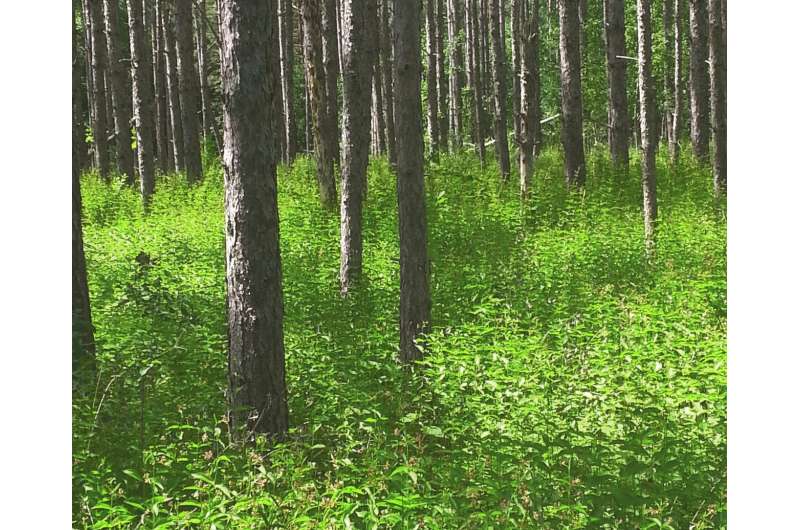Scientists suggest way to predict the behavior of invasive weeds

Is it possible to predict which nonnative plant species will become invasive weeds and when? According to research featured in the journal Invasive Plant Science and Management, the answer is "hopefully yes." And those predictions can lead to more effective and cost-efficient weed management.
Researchers say invasive species generally follow a three-phase development curve - from lag to expansion to plateau. The length and rapidity of the expansion phase varies across species and determines how aggressively a plant spreads.
"Understanding the source of this variation can help us predict which nonnative species become invasive," says Pedro M. Antunes, who co-authored of the paper with Dr. Brandon Schamp, both of Algoma University in Ontario, Canada. "The key is to take a best practices-based approach to gathering and comparing data about past invaders, their traits and preferred habitats."
Examples of the best practices the research team recommends:
- Use herbarium records collected by universities, museums and governmental organizations as a data source for invasion curves. They provide some of the most comprehensive plant distribution information available - some dating back to the 1700s.
- Verify the accuracy of the records and confirm the origin and taxonomic status of each specimen using international Food and Agriculture Organization criteria.
- Account for phylogenetic relatedness by creating a "family tree" that shows the linkages among various plants.
- Systematically collect new data annually from 10x10 km quadrats to evaluate abundance of nonnative species.
- Compare invasion curves to determine which traits are linked to more aggressive growth and expansion.
"As our knowledge increases, we can make better-informed predictions about the likelihood of particular species becoming invasive and the timeline they will travel as they do so," Antunes says. "We then can take advantage of the lag time before the plant population expands to intervene with appropriate management controls."
More information: Pedro M. Antunes et al, Constructing Standard Invasion Curves from Herbarium Data—Toward Increased Predictability of Plant Invasions, Invasive Plant Science and Management (2017). DOI: 10.1017/inp.2017.38
Provided by Cambridge University Press


















